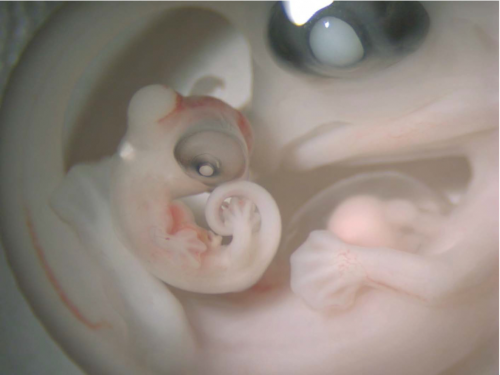Wiggle your fingers. There should be ten of them. Now wiggle your toes. Still ten, right? We’re obviously not the only species that have digits. Birds have digits too. However, the development of their digits and consequently their wings is much different than ours: they end with fewer digits than they started with—they start with five and end up with three by the end of development. Scientists have long debated which three digits persisted throughout development and the mechanism by which they were selected. A research team in Yale’s Department of Ecology and Evolutionary Biology—led by Professor Gunter Wagner—recently studied genes that regulate digit patterns in birds to uncover the evolutionary origin of avian wings. Wagner and his team found evidence against a long-standing theory, the frame-shift hypothesis, to explain avian wing development and investigate digit identity.
Birds have always puzzled evolutionary biologists. Only after the unearthing in China of dinosaur fossils bearing feathers did the scientific community agree that birds indeed evolved from dinosaurs. However, the resolution of the dinosaur-bird debate sparked a new controversy over bird wing development. “Paleontology [says] that fingers four and five have disappeared, so birds should have one-two-three, corresponding to the thumb, index, and middle digits,” Wagner explained. Embryological studies, however, tell a different story.
A long-prevalent theory, the frame-shift hypothesis, holds that in the evolution of birds, five-digit limbs grew in such a way that digit one ended up as digit two, and digit two ended up as digit three such that digits one-two-three became two-three-four on the final limb: the animal’s thumb grew where the index finger was typically positioned, and so on. If this theory were true, a gene expression study of digit development would show congruency between the expression patterns in the three-fingered bird wings and the first three digits of other animal limbs. For two decades, researchers have searched for these “digit identity genes” that supposedly control the development of individual digits. “Homeotic mutations are ones where one part of the body appears in another place on the body,” Wagner said. “We proposed that the three digits in the wing grow in another position in the developing limb.”
The focus of his study was to investigate the gene patterns in the limbs of four different species so that the scientists could determine whether or not digits have unique developmental patterns. The researchers sequenced the RNA—a reliable measure of gene expression—of the limbs with the expectation that a highly expressed will have more RNA. Wagner’s team focuses on the genes that code for proteins in alligator, green anole lizard, mouse, and human embryos that they had previously grown to the development stage. Then, the digits were separated and probed for RNA, which was translated into complementary DNA (cDNA). The cDNA was later sequenced at the Yale Center for Genome Analysis. The researchers found a conserved gene pattern in the thumb-positioned digit or digit one only. This unexpected discovery encouraged them to further question the main assumptions upon which current vertebrate limb research is built.
Through similar experimental methods, Wagner’s team subsequently found that the gene expression of the three bird digits are most comparable to that of digits one, three, and four of limbs in closely related animals, suggesting that one-two-three became one-three-four. This conclusion does not support the frame shift hypothesis, in which digits one-two-three should become digits two-three-four. “In the end, digit one, the thumb, clearly develops from the position of digit two, but unexpectedly, the remaining two digits have a signature that are from three and four in their embryo,” Wagner said.
While the process by which this unexpected digit pattern develops is still to be discovered, Wagner believes that the big takeaway is that digit identity is not a universal property across different species. Each species—based on its individual transcriptome—has expressed different sets of genes. While people assume five fingered species all have the same developmental identities, this is not necessarily the case. The “pinkie” of a mouse is not the same as the “pinkie” of an alligator. Understanding digit pattern development in birds has broad scientific implications, especially in the medical field, where studying diseases and choosing model organisms for studies necessitates knowledge of evolutionary processes. Avian wing development has far stretching implications, specifically, in elucidating the biology in all of us.

